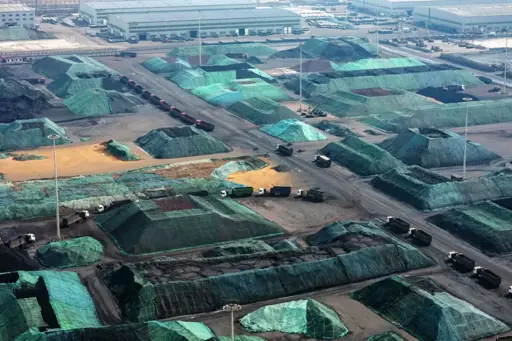- cross-posted to:
- [email protected]
- cross-posted to:
- [email protected]
Coal demand set a record high in 2024, according to the International Energy Agency’s annual report published on Wednesday. Considering the commodity is the most important contributor to global warming, its consumption trends matter enormously for the fight against climate change. The report makes for a depressing reading: The planet is losing to our unquenchable demand for king coal. Forget all the slogans about consigning coal to history. We’re on a path to consigning the planet to history.
Took out the China bit as its just the industrial engine we’ve outsourced our dirtiest emissions too



Expect a hot and stormy future.
spoiler
Coal demand set a record high in 2024, according to the International Energy Agency’s annual report published on Wednesday. Considering the commodity is the most important contributor to global warming, its consumption trends matter enormously for the fight against climate change. The report makes for a depressing reading: The planet is losing to our unquenchable demand for king coal. Forget all the slogans about consigning coal to history. We’re on a path to consigning the planet to history.
As the IEA puts it, “coal is often considered a fuel of the past, but global consumption of it has doubled in the past three decades.” Worse, not only has usage grown a lot – particularly in China and India – but demand will keep rising for the foreseeable future.
The IEA now estimates that global coal demand surged to an all-time high of 8,771 million metric tons this year, up 1% from 2023, as electricity demand rose faster than expected. That shouldn’t be a surprise: The energy transition requires electrifying everything. Renewables are doing some of that job, but coal remains, the go-to fuel to power the energy transition. Worse, the IEA revised higher its historical data, so the increase comes from a significantly higher baseline than before. The world is consuming a lot more coal than we thought – and therefore, it’s polluting the atmosphere a lot more than we thought, too.
While last year the IEA initially estimated consumption in 2023 at 8,563 million tons, it pegs it now at 8,687 million. The difference equals roughlythe annual demand of Japan, the world’s fourth-biggest coal consumer.
The IEA is trying to paint an optimistic outlook about the future. But the numbers say otherwise. In rose-tinted prose, the agency says that global coal demand could “plateau” over the next three years. Well, that’s if you don’t mind that the plateau is uphill rather than fairly level. In reality, the IEA forecasts fresh records for coal demand in 2025, 2026 and again in 2027.
True, the annual increase for each of the next few years is small. But the trend is, nonetheless, higher. The electricity sector has been the main driver, with power generation from burning the fossil fuel set to reach an all-time high of 10,700 terawatt-hours in 2024.